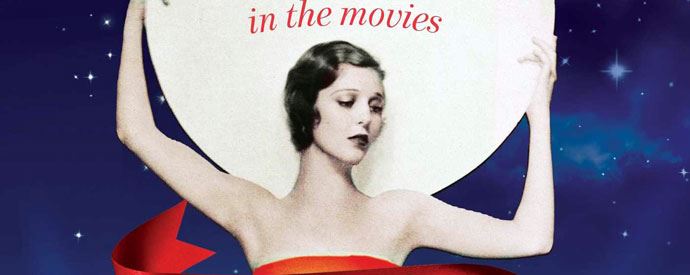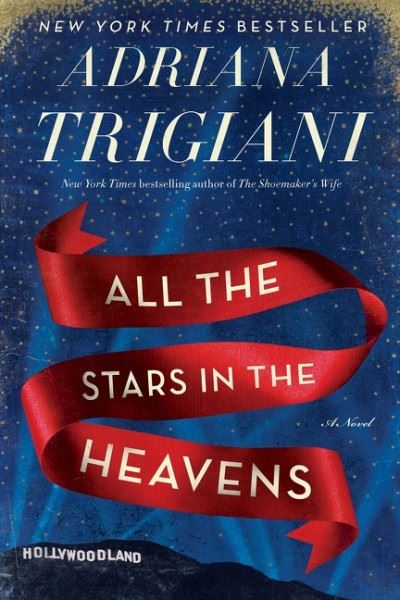Books
All the Stars in the Heavens book review

By Leroy Douresseaux
January 16, 2016 - 20:07
 |
| All the Stars in the Heavens cover image |
All the Stars in the Heavens is the most recent novel from
Adriana Trigiani, the New York Times bestselling author of
The Shoemaker's Wife. Based on a true story, this new novel is set in the “Golden Age” of Hollywood (a two-decade period from the late 1920s to the late 1940s) and is a story of adventure, artistry, family ties, artistry, and romance.
All the Stars in the Heavens has both a prologue and an epilogue that is set in October 2000, and its story goes back to 1917. However, the main body of the narrative is set in 1930s
Los Angeles. In
Hollywood, the movie business is booming, as the film industry turns out glittery fantasies to take Americans minds off the Great Depression.
Loretta Young is an ambitious young actress who carefully plans the arc of her career. In 1935, she is 21-years-old when she is cast in
The Call of the Wild. She considers this new film to be a pivotal moment in her career. With the help of her personal secretary,
Alda Ducci (a former novice who wanted to be a nun), Loretta carefully plans a trip to
Mount Baker, Washington where The Call of the Wild will be filmed.
When he first gets a look at Loretta,
Clark Gable instantly falls for his stunning and vivacious young costar. Loretta cannot deny that she is also attracted to Gable, but her recent “romance” with former costar,
Spencer Tracy, on an earlier film, has made Loretta wary of married men, which Gable is. However, she can't resist him, and their love will be a star-crossed one. Filled with such Hollywood legends as
Joan Crawford,
Myrna Loy,
David Niven,
Hattie McDaniel, and more, this story imagines a great love affair in Hollywood's most glittery era.
THE LOWDOWN: When HarperCollins offered a galley copy of All the Stars in the Heavens for review, I practically jumped at it. Reading a summary that described it as being set in Hollywood's “Golden Age” was enough for me. I think people generally consider the 1930s and 1940s as the golden age of American movie-making. Some historians believe that age lasted until the end of the studio system.
Anyway, many of the movies that I consider the best films of all time:
Casablanca,
Citizen Kane,
Gone with the Wind,
The Wizard of Oz,
The Best Years of Our Lives,
The Maltese Falcon,
Pinocchio, and
Bambi, to name just a few, are from the 1930s and 40s. Some of my favorite films: The Adventures of Robin Hood,
Crossfire,
Lost Horizon,
Ninotchka, and
To Be or Not to Be, to once again name just few, are also from those two decades.
However, I have only seen two Clark Gable films in their entirety, Gone with the Wind and
It Happened One Night (for which Gable won an Oscar). I am familiar with Loretta Young's name, but that is all she is to me, now. After reading this book, I do plan to sample some of the work of Loretta Young, who was also an Oscar winner.
All the Stars in the Heavens captures the drama, luster, power, and secrets that could only thrive in the studio system of Hollywood's yesteryear, simply because the novel is full of the drama and the secrets of the stars and also the power of the studios. Every bit of it is dressed in the luster of lavish costumes and elaborate sets used to make movies and also in the stylish clothes and in the splendor that defined the lives of Hollywood's biggest stars. Using colorful descriptions and detailed explanations of where the stars lives, how they dressed, what they ate, etc., Adriana Trigiani transports her readers back in time to an idealized version of a bygone era that specialized in creating the fanciful and the ideal.
Much of the novel is set in the mid-1930s, and the rest of the novel focuses on what occurred in the 1930s. For all intents and purposes, All the Stars in the Heavens is like a prose version of a film from the 1930s. In a way, it reads like a novelization of a film biopic of the real-life romance of Loretta Young and Clark Gable. The joy and sorrow and the love and the pain reflect the high drama and melodrama of a movie one might see on Turner Classic Movies.
I will say that the last two chapters of
All the Stars in the Heavens are more like a television movie about the “good old days.” These forty pages lose the luster of “Old Hollywood,” and are surprisingly melancholy, being mostly sad and regretful. This part of the novel yearns for the films of a dream factory that made black and white movies that sparkled as if they were colorful jewels. It is there that everything feels right... even if none of it would last for long. Even with almost 450 pages of story,
All the Stars in the Heavens sometimes feels as if it isn't long enough.
POSSIBLE AUDIENCE: Fans of classic movies will certainly want to read
All the Stars in the Heavens.
Last Updated: January 17, 2025 - 08:20

